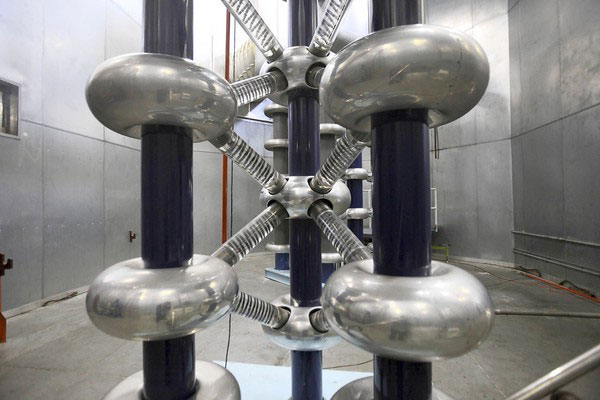
Fermilab's Tevatron goes offline today, bringing to an end a rich era in American experimental physics (well, an end to the experimentation itself; there's still data to analyize). The wake begins at 1:45, and you can watch it live here.
The most interesting angle I've seen about the Tevatron is this week's cover story in the Reader, an excellent piece by Sam Worley that spends some time on the tiny farming community of Weston, Illinois, which was eliminated by Fermilab by, or with the threat of, eminent domain:
Nearly a year after the groundbreaking, land that held 85 homes and 66 farms had been taken over by the state of Illinois and given to Fermilab. Some of the residents bought out by the state were profiled in the Trib. "Sure, we hate to leave this home," said "Mrs. Wolsfeld," wife of "Robert." "It's so old and elegant. We'll never again have a house with a sitting room and an old fashioned parlor." Her husband said that he worked 138 acres of "the best farm land in Illinois. It's hard to leave but I guess we have to make room for progress."
"There were some families who were very upset" with being relocated by the state, says Ronald Anderson, who was in college when the state bought his family's land in 1968. "Some of the farmers didn't think they were being treated fairly. They didn't want to move, but if they had to move, they wanted top dollar for what they were selling." He says, though, that the dictate to move was a "godsend" to his mother. Her husband had died shortly before the announcement that the lab would be built atop Weston, and "her whole life had changed anyway," Anderson says. "I suppose she could have kept the farm, but she probably would have sold it in any case."
As Worley points out, the creation of Fermilab predated the rapid suburbanization of DuPage and Kane Counties, so it's unlikely that Weston would have made it into the 21st century as a farming community of 450 even if it had survived Fermilab, or if the whole municipality had been moved next door, as the residents suggested.
It reminded me of Smith Mountain Lake in central Virginia, where I used to vacation almost every summer; if you've seen the Bill Murray comedy What About Bob?, that's where it was filmed. Like so many manmade reservoirs constructed around a hydroelectric dam, its construction required moving people off their farms. I thought this was incredibly eerie when I was a kid, picturing abandoned farmhouses below me as I floated on the murky water. The first short story I ever wrote focused on an old man who refused to move; the last scene featured the undead farmer rocking on his porch (I was a morbid kid, and exposed to lots of Appalachian ghost stories in my childhood).
Anyway, Worley's piece is well worth reading; on a day when people are thinking about the history of the Tevatron, it's worth a thought for what was there before.
Photograph: Chicago Tribune



